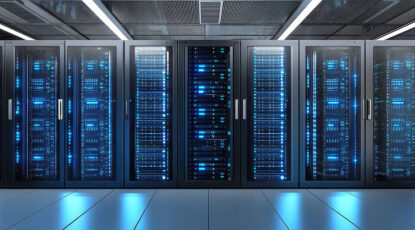Have you ever wondered what happens to that plastic container after you toss it into the recycling bin? At Rethink Waste’s Shoreway Environmental Center in San Carlos, they aim to help educate the community on all things recycling. Owned by Rethink Waste and operated with the help of Recology and South Bay Recycling, the Shoreway Environmental Center is California’s greenest recycling center and transfer station. Through free tours offered to local businesses and schools, the organization promotes the 4 R’s – Reduce, Reuse, Recycle, Rot – a hierarchy that encourages reducing and reusing.
Inside the Facility

Rethink Waste’s tour starts in their Materials Recovery Facility, known as MRF (pronounced MURF). On average, collection trucks haul about 610,000 pounds of material into the MRF each day. From there, mixed materials pile onto a maze of nine different conveyor belts, entering multiple sorts by both machinery and human screening. The desired outcome of the sorting places paper, plastics, and metals into giant bails, making it easier to transfer to their next destination. The amount of paper alone recycled at their facility prevents 817,700 trees from being cut down. That many trees are capable of keeping 20.4 million pounds of CO2 out of the atmosphere.


This specific machine separates paper from metals using gravity.
As the rings spin rapidly in upward rotation, the paper is pushed upward and the metal objects downward.
With machines moving materials swiftly in all directions, it is hard to imagine a structure to the chaos, but the final stats do not lie. Of all the material that enters the facility, 83 percent is successfully sorted into bails for reuse while the remaining 17 percent is sent to landfill.
Unfortunately, not all recyclables are created equal – especially plastics
While recycling is great for the planet, it is easy to forget that it is also a business. Recycling markets around the world regulate what recycling centers, like Shoreway Environmental Center, sort and bail for reuse. For example, plastics labeled one (PET) and two (HDPE), are often used to make plastic water bottles and have a very large resale market. Meanwhile, the markets for plastics three through seven can vary. If recycling markets are not willing to buy plastics three through seven, this plastic could find its way into landfills, even though it is technically recyclable.
This is why Rethink Waste puts an emphasis on recycling education and awareness. Understanding what you can and cannot recycle significantly helps recycling facilities process and sort materials more efficiently and at lower costs.
Touring Rethink Waste further highlights that recycling is not the answer to reducing waste. Although recycling and buying recycled products is an important part of keeping products out of landfills, reducing and reusing provides a greater, longer-lasting impact on our environment.
12 key takeaways from the Rethink Waste tour to help you become a better recycler
- Learn what materials your local recycling plant accepts – if available, take a tour!
- Be mindful of the products you buy and find ways to reuse and reduce when possible. Reusable water bottles and shopping bags go a long way!
- You have probably seen a little triangle at the bottom of your plastic item. That symbol, known as a resin identification code, is used to help recycling plants sort plastic by type. It is not necessarily an indication on whether it is recyclable. Check with your local recycling plant to inquire about what plastics they accept.
- Black plastics cannot be recycled. When plastics melt down, black plastics taint clear plastic batches. For this reason, send your black plastics to the trash.
- Old sneakers have purpose. Have worn out athletic shoes you need to get rid of? Nike collects and grinds up your worn out running shoes, turning them into surfaces for playgrounds and athletic spaces.
- Donate when possible. Clothing bins are located all around and provide a way to give used clothing a second home.
- Batteries do not belong in the recycling bin because they can start fires inside MRF machinery. If you have extra batteries laying around, take them to your recycling center’s residential drop-off location.
- Heavy-duty glass, like cooking Pyrex dishes and building windows, cannot be recycled.
- Untreated, raw wood is compostable, but treated wood (like the flooring in your house) is not.
- Try your best to clean and empty your recyclables before putting them in the bin. Full water bottles or jars of food usually end up in landfill.
- Food cannot be recycled. Place it in the compost bin instead.
- Compostable single-use items are becoming more popular. Before you toss your single-use item in the composter, make sure it specifically says ‘Compostable’ or ‘Certified Compostable’. The term biodegradable does not necessarily mean it is compostable at your local facility.



